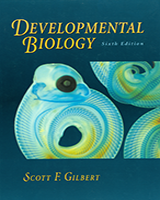By agreement with the publisher, this book is accessible by the search feature, but cannot be browsed.
NCBI Bookshelf. A service of the National Library of Medicine, National Institutes of Health.
Gilbert SF. Developmental Biology. 6th edition. Sunderland (MA): Sinauer Associates; 2000.

Developmental Biology. 6th edition.
Show detailsFlowering and senescence (a developmental program leading to death) are closely linked in many angiosperms. Individual flower petals in some species senesce following pollination. Orchids, which stay fresh for long periods of time if they are not pollinated, are a good example. Fruit ripening (and ultimately over-ripening) is an example of organ senescence. Whole-plant senescence leads to the death of the entire sporophyte generation. Monocarpic plants flower once and then senesce. Polycarpic plants, such as the bristlecone pine, can live thousands of years (4900 years is the current record) and flower repeatedly. In polycarpic plants, death is by accident; in monocarpic plants, it appears to be genetically programmed. Flowers and fruits play a key role in the process, and their removal can sometimes delay senescence. In some legumes, senescence can be delayed by removing the developing seed—in other words, the embryo may trigger senescence in the parent plant. During flowering and fruit development, nutrients are reallocated from other parts of the plant to support the development of the next generation. The reproductive structures become a nutrient sink, and this can lead to whole-plant senescence.
- Senescence - Developmental BiologySenescence - Developmental Biology
- Atp6v1a ATPase H+ transporting V1 subunit A [Rattus norvegicus]Atp6v1a ATPase H+ transporting V1 subunit A [Rattus norvegicus]Gene ID:685232Gene
- MIR545 [Bos taurus]MIR545 [Bos taurus]Gene ID:791022Gene
Your browsing activity is empty.
Activity recording is turned off.
See more...